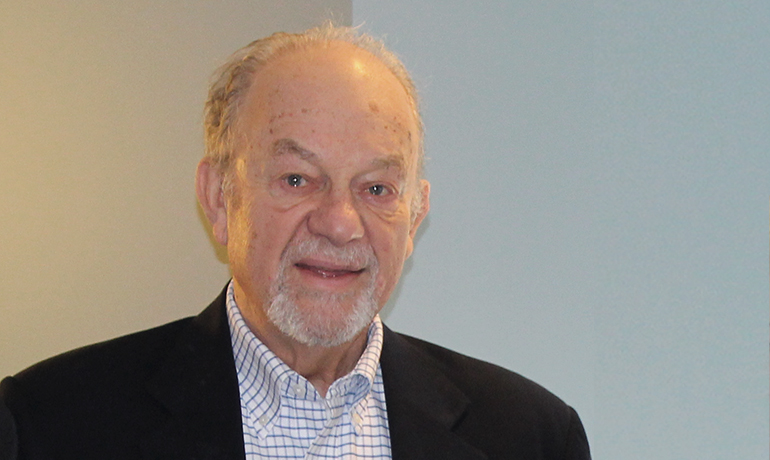
Richard Warnecke knows that disparities exist between minority and white women receiving a timely breast cancer diagnosis. The question he has is why.
In a new paper published online in the journal Cancer Epidemiology, Biomarkers & Prevention, Warnecke, PhD, University of Illinois Cancer Center member and professor emeritus of epidemiology, public administration and sociology, reviewed data from more than 900 black, Latina and white patients to learn about the barriers they encounter to receiving a timely mammography screening and follow-up treatment. Warnecke’s findings identify potential policy interventions to address the problems related to later stage diagnosis.
Warnecke and his colleagues conducted a multilevel analysis to assess the effects of policies intended to assist medically underserved populations on disparity in later stage diagnosis by using data from the Breast Cancer Care in Chicago study, where 411 black, 397 white and 181 Hispanic women diagnosed between the ages of 30-years-old to 79 were interviewed and their medical records reviewed. Information was obtained on pathologic stage at diagnosis, tumor characteristics, and date of diagnosis.
The data was collected between 2005 and 2008, at a time when “Chicago was one of the most racially and ethnically segregated cities in the United States,” Warnecke said.
“Low income and racial and ethnic minority patients, largely residing in medically underserved communities on the south and west sides of the city, often received their care in under-resourced safety net hospitals and public health clinics,” he said. “Residents of the more racially, ethnically, and socioeconomically diverse north and east sides were more likely to receive their care at academic and high volume health centers primarily located there.”
Not only were the minority women often forced to travel outside of their neighborhoods for diagnosis and treatment, but a choice of health care centers may have been limited due to a patient’s insurance, a primary factor of access to care, Warnecke said. The primary care provider’s preferences often resulted in patient referral for diagnostic follow-up of an abnormal mammogram to a local “safety net” hospital that could not provide the spectrum of care needed for timely diagnosis of an abnormal mammogram.
“Time is of the essence. A patient’s delay in diagnosis and treatment often results when the referral hospitals are not properly equipped to assist them and they may have to be referred several times before diagnostic resolution,” Warnecke said. At the time of the research, Chicago had 11 full-service or academic facilities that were designated a Breast Cancer Center of Excellence (BICOE), but many patients received mammograms and diagnostic follow-up at unaccredited facilities, he said.
Undergoing a mammogram at an accredited health care facility predicted a timely breast cancer diagnosis, but such access is usually dependent on a referral by the patient’s primary care provider. Understanding the referral process and referral decisions made by primary care physicians could improve access to care among underserved women, Warnecke said.
Multilevel approaches to studying health disparities are becoming standard for understanding and addressing the inequalities, Warnecke said. It has produced successful policy outcomes in tobacco use and other areas, such as energy balance behavior and HPV vaccination. The new study conducted by Warnecke and his colleagues strongly support exploring policies and incentives to increase referrals to Breast Cancer Center of Excellence facilities in Chicago and to assist facilities in obtaining BICOE designation,” he said.
In addition, greater understanding of the referral process and how referrals to BICOE facilities and how to overcome systematic barriers to accessing them is needed, Warnecke said. Focus should examine how incentives such as insurance (Medicaid) reimbursement may influence primary care providers. The focus should be structural and may examine the effects of merging primary care clinics with specialty care providers, or attempts to integrating specialty care providers into primary care safety net clinics or local hospitals.
Co-authors on the paper are Richard T. Campbell, PhD, professor emeritus of biostatistics and sociology; Ganga Vijayasiri, PhD, Institute for Health Research and Policy; Richard E. Barrett, PhD, professor emeritus of sociology; and Garth H. Rauscher, PhD, associate professor of epidemiology and UI Cancer Center member.
